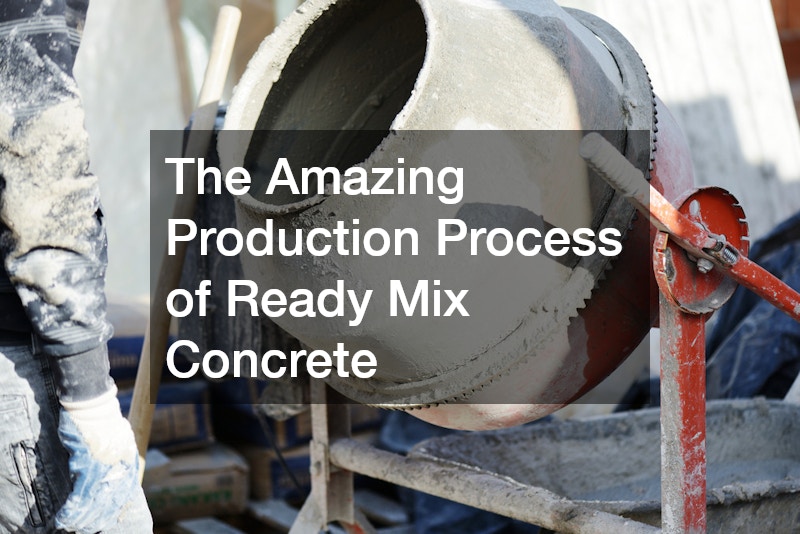
One of the most essential materials in modern construction is ready mix concrete. Its versatility, strength, and durability make it a preferred choice for builders across the globe. But have you ever wondered about the fascinating journey of how this indispensable material is produced? The process is both intricate and fascinating, employing cutting-edge technology and a precise balance of raw materials to create a product that can withstand the elements and the test of time.
Video Source
The production of ready mix concrete begins with the careful selection of raw materials. These raw materials primarily include cement, water, aggregates like sand and gravel, and sometimes, additives to enhance the concrete’s properties. The quality of these materials is crucial, as it directly impacts the final product's performance. Producers must source high-grade cement and aggregates, ensuring they are free from impurities which could compromise the strength and durability of the concrete. This stringent quality control is essential before these materials even reach the mixing stage.
Once the raw materials are gathered and inspected, they are transported to the concrete batching plant. Here, the process becomes more technical. The batching plant is equipped with state-of-the-art machinery designed to measure and combine the materials in precise proportions. This automated system ensures that each batch of concrete has consistent quality and composition. The plant operators oversee the process, making necessary adjustments in real-time to account for factors such as humidity and temperature, which can affect the mixture.
The actual mixing of the materials occurs within industrial mixers. These mixers are robust machines that thoroughly blend the cement, water, and aggregates to form a uniform mixture. This crucial step transforms the raw materials into what is commonly known as a “batch” of ready-mix concrete. Depending on the specific requirements of a project, additional ingredients may be added during mixing. Additives such as fly ash, silica fume, or chemical admixtures can be incorporated to improve the concrete’s performance by increasing workability, reducing water demand, or enhancing durability.
After mixing, the ready-mixed concrete must be transported to the construction site, marking a critical phase in the construction process. This transportation is a race against time because concrete starts to set shortly after mixing. Specialized trucks, known as transit mixers, are used to ensure the concrete remains fresh and workable during the journey. These trucks are equipped with rotating drums that continuously agitate the mixture, preventing it from hardening or separating while in transit. Timing and coordination are essential, as delays could lead to the concrete beginning to set prematurely, rendering it unusable.
In addition to keeping the concrete fresh, the temperature during transportation plays a crucial role. In hot weather, ice or cooling additives may be used to slow down the setting process, while in colder conditions, heated water or accelerators may be added to maintain workability. Drivers and dispatchers must communicate closely to manage traffic, site accessibility, and unforeseen delays. Upon arrival at the site, the truck’s chute or pump system is used to transfer the concrete efficiently to the designated area for pouring. This seamless coordination between mixing, transportation, and pouring is essential to achieving the desired quality, durability, and structural integrity of the final construction.
Finally, the ready-mix concrete arrives at the construction site, where it is poured and molded into the desired structural shape. This critical phase demands skilled laborers who must handle the material with precision to avoid defects such as air pockets, segregation, or improper setting, which can compromise the structure’s integrity. Proper leveling and compacting techniques are essential to ensure uniformity and eliminate any weak spots. Once the concrete is in place, the curing process begins—a vital step for maximizing its strength, durability, and longevity. Curing involves maintaining optimal moisture and temperature conditions, often through methods like water spraying, wet coverings, or curing compounds, to prevent premature drying or cracking. This gradual hardening process ensures the concrete achieves its full design strength, enabling it to withstand environmental stressors, heavy loads, and freeze-thaw cycles for decades.
In conclusion, the production of ready mix concrete is a remarkable process that involves meticulous planning, precision engineering, and expert execution at every stage. From the careful selection and blending of raw materials like cement, aggregates, and water to the rigorous mixing, pouring, and curing processes, each step is crucial in producing a durable, high-performance building material. This process is a testament to human ingenuity, showcasing our ability to harness natural resources and convert them into structures that shape skylines and reflect cultural and economic progress worldwide. Moreover, understanding the intricate details behind ready mix concrete production deepens our appreciation for the bridges, skyscrapers, and homes that grace our modern landscapes, demonstrating the vital role this material plays in sustainable urban development.
.